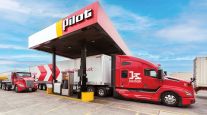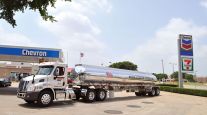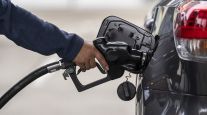Opinion: Fuel’s Many Costs
By Ernie Betancourt
President
QuikQ LLC
This Opinion piece appears in the May 2 print edition of Transport Topics. Click here to subscribe today.
Traditionally, fuel has been second only to drivers as the highest variable expense truckload companies face. Since the price of fuel probably isn’t going down anytime soon, this a good time for carriers interested in future prosperity to review the costs associated with fuel.
Costs, plural? Yes, because the price of the fuel actually burned in a truck engine is only one cost element. The others include inventory, financing, acquisition, fuel burned while the tractor isn’t generating revenue — and fuel that’s stolen and burned in somebody else’s engine.
Inventory is the fuel stored at a carrier’s terminals and riding in its trucks. Excess fuel cuts into profitability and available liquidity. If $4 a gallon is the base price, your trucks routinely carry 100 extra gallons, and there are 100 trucks in your fleet, they’re hauling $40,000 worth of working capital.
Financing and acquisition costs for fuel purchased over-the-road are even more complex and must be considered together because of the limitations of today’s payment systems. In some cases, the cost of fuel includes 10 cents per gallon of financing and transaction costs, the result of the standard 2.5% fee independent truck stops must pay third-party intermediaries known as “billing companies” for the majority of transactions.
Also to be factored in are the “unproductive” fuel costs racked up by burning fuel while not generating revenue, a category that includes idling, traveling out-of-route and deadheading.
That brings us to theft: Today’s higher fuel prices provide the incentive for fraud, and a driver who restricts himself to stealing 5% — an average given to me by a large, well-run, national truckload carrier — theft at that level is difficult, if not impossible, to catch. For example, if a truck is driven an average of 120,000 miles per year and gets 6 miles to the gallon, that’s 20,000 gallons per year. Five percent of that is 1,000 gallons, which at $4 a gallon comes to $4,000.
Before discussing solutions, however, let’s review how we got here. In the early 1980s, buying fuel over-the-road involved a plastic identification card sans magnetic stripe. The card carried its purchase policy, which the cashier was responsible for enforcing. The carrier received the statement at the end of the month, and if the policy had been violated, the carrier rejected the invoice.
Conflicts led billing companies to develop programs involving an “approval” issued by an operator in a call center, but that was expensive.
Ultimately, magnetic stripes and terminals designed for consumer credit cards were used, and the cashier became a data-entry clerk using devices not made for the purpose.
Natso, the truck-stop association, called this the “point-of-sale dilemma.” Training a fuel cashier took months, and their high turnover rate created a major cost for truck stops.
About 25 years ago, however, a company called Trendar introduced “universal POS [point-of-service],” which simplified a cashier’s life by internally translating a diesel sale into the correct code used by the card company. Trendar so revolutionized the truck-stop market that, even today, there are more Trendar POS units in truck stops than all the others combined.
Technology limitations caused the industry to stick with the consumer credit-card model for commercial fuel transactions, creating some challenges. For one thing, the real customer, the carrier, was all but invisible to the truck stop. Second, the person wielding the card was a purchasing agent, not a principal in the transaction.
But in those days, fuel was relatively cheap and fraud wasn’t rampant. A few truck stops, mostly chains, resorted to a “direct-bill” arrangement that, in effect, acknowledged this was a commercial transaction. The supplier dealt directly with the customer and managed credit, collection and financing like other business-to-business suppliers.
Today, magnetic-stripe cards drive most transactions. Some truck stops treat fuel sales as commercial transactions, but a significant number still treat sales as consumer transactions and allow third-party card systems to control their business.
The Trendar POS introduced all those years ago was made possible by technology such as IBM PCs plus deep insights into how that technology might streamline existing processes. Today’s technology allows for more change, and the catalyst driving it will be astronomically high fuel prices and the concomitant need to control all fuel-related costs.
In the fuel lane itself, the key change will be the verification of each truck in that lane. Of the several ways to do this, at least two are being tested in truck stops now. Fuel doesn’t flow until the correct truck is in the lane. If it leaves, the dispenser shuts off.
In many ways, though, the technology is immaterial. The important thing is to ensure that the carrier paying for the fuel is confident the truck being filled is its truck.
Back-office changes will be even more important. With current fueling systems, a separate database is maintained at the card-processing center. Synchronizing that database with a carrier’s information system is neither “fail-safe” nor efficient. “Purchase policy” management systems are tied to a card because that separate database can’t keep up with carrier information changes.
A single purchase policy based on a separate database maintained by a third party is not a 21st-century solution to managing separate truck, trailer and driver needs. Today’s transactions are based on a daily fuel limit instead of the fuel consumed — or better yet, the fuel that should have been consumed.
Integrating decision support systems, onboard systems, the fuel-purchase management system and the carrier’s enterprise software will be the future for carriers that must manage all fuel costs in a world of escalating fuel prices and interest rates.
QuikQ, Franklin, Tenn., is a software development company working to improve the trucking industry’s control of diesel fuel transactions by connecting carriers with truck stops.




